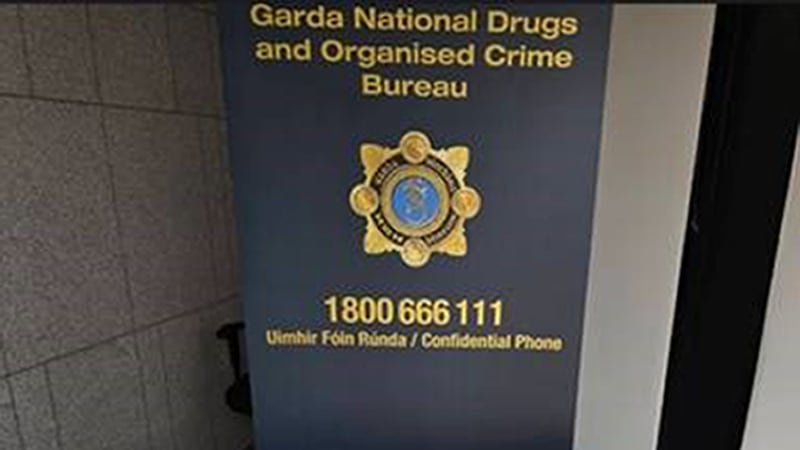In the Walkinstown area of Dublin, there is a small but unusually shaped public park, perhaps unique in the city.
I would formerly have called the shape “boat-like” or said it resembled the intersection of a Venn diagram. But as I now know, having just found a discussion of the subject on Reddit, the mathematical term is vesica piscis, literally “the bladder of a fish”.
Anyway, my main point is that, in keeping with a general theme in that part of Dublin, the two roads that curve around the park, meeting at either end, are named in honour of Irish musicians.
Musicians of greatly contrasting fame, in this case. “Thomas Moore Road” speaks for itself: most Irish people still know who he is. But I suspect that even many who live on it now have little or no idea who “Hardebeck Avenue” is named after.
Yes, Carl Gilbert Hardebeck does stretch the definition of “Irish musician”, in that he was born in London in 1869, to German and Welsh parents. He did not set foot in Ireland until the age of 24.
But he quickly went native here, learning Irish and, despite the loss of his sight in childhood, travelling widely in the Gaeltacht areas of Ulster on a mission to save traditional airs from oblivion.
By the time he died, 80 years ago this Monday, he was known as the “Blind Bard of Belfast”, the city he had first moved to in 1893.
Hardebeck’s transition included being politically radicalised, first by the Dublin Lockout of 1913, then the Easter Rising. After that, he declared himself a believer in the holy Trinity of “God, Beethoven, and Padraig Pearse”.
By then he spoke with a Belfast accent, in which he addressed everyone as “Boss”. Although he spent years playing organ in church, and later became a professor of music, he was inclined to irreverence about his vocation. Hence a typical comment: “If I had my sight, boss, I’d be conducting an orchestra on a cruiser.”
Like the Normans of old, he may have become more Irish than the Irish themselves – at least in the music fraternity. In a 1978 article for this newspaper, composer Michael Bowles suggested Hardebeck “was the first in our history to combine in one person two of the essential ingredients of an ‘Irish’ musician”.
These were: “(1) the technical skill to wrote down the melodies exactly as he heard them and then devise settings which, although elementary in scope, revealed their essence; (2) a knowledge of Irish and a precise understanding of the language rhythms.”
The celebrated Edward Bunting, by contrast, who from the 1790s on worked to preserve the music of the last itinerant harp players (and is also commemorated by a road in Walkinstown), had no Irish.
Decades later, George Petrie, a scholar of Irish antiquities (remembered by a road in another Dublin enclave, the “Tenters”), lacked the technical ability to write down melodies accurately.
As late as the 1930s, according to Bowles: “there was still no musician with an academic background who understood Irish or even knew his way around existing printed collections of folksong. No one, that is, except Hardebeck.”
Michael Collins was also an admirer and helped Hardebeck become the first professor of Irish music in UCC in 1922. But Bowles suggests that, ironically, his politics didn’t quite fit in there. That and Hardebeck’s dislike for administrative work contributed to an early departure.
He later worked for An Gúm, the government publisher, as arranger of traditional songs for piano and choirs. And when he died on February 10th, he was considered important enough for a state funeral.
He also earned a beautiful gravestone in Glasnevin Cemetery, carved by the Cork sculptor Seamus “Stone Mad” Murphy. That carries the bilingual epitaph “Oibrí do sháraithe ar son ceoil ár sinsear” (“Indefatigable worker for the music of our ancestors”) and “He made our old songs live again.”
But elsewhere, the road in Walkinstown and a plaque in a Belfast church apart, he is little commemorated today. Or “almost completely forgotten”, according to Zef Kinkenbergh from Glendalough, who emailed me drawing attention to the impending anniversary.
Zef has a vested interest in remembering Hardebeck, although hardly a big one. As he jokes: “I can’t claim to have had any ancestors in the GPO or even in Ireland back in the day but it is nice to have some connection with the Irish cultural revival even if it is only that my Dutch grandfather’s twin brother married Carl’s niece.”
Having declared this minority shareholding, he insists that his relative is objectively worthy of greater fame, especially since his life resonates with such contemporary issues “as migration, inclusion, and overcoming disability”.
On this last note, Zef points out that Hardebeck’s work in preserving the songs of Gaeltacht Ulster required more than just musical and linguistic dexterity: “This was in the days before tape recorders and dictaphones. And being blind he had to record the Irish words and the music using Braille.”
That first meant having to adapt Braille for Irish “and having to use a Braille slate & stylus, which means writing backwards”.
But this too is now part of Hardebeck’s legacy. His innovations were later adopted “as the official Braille type for the Irish language”.
















